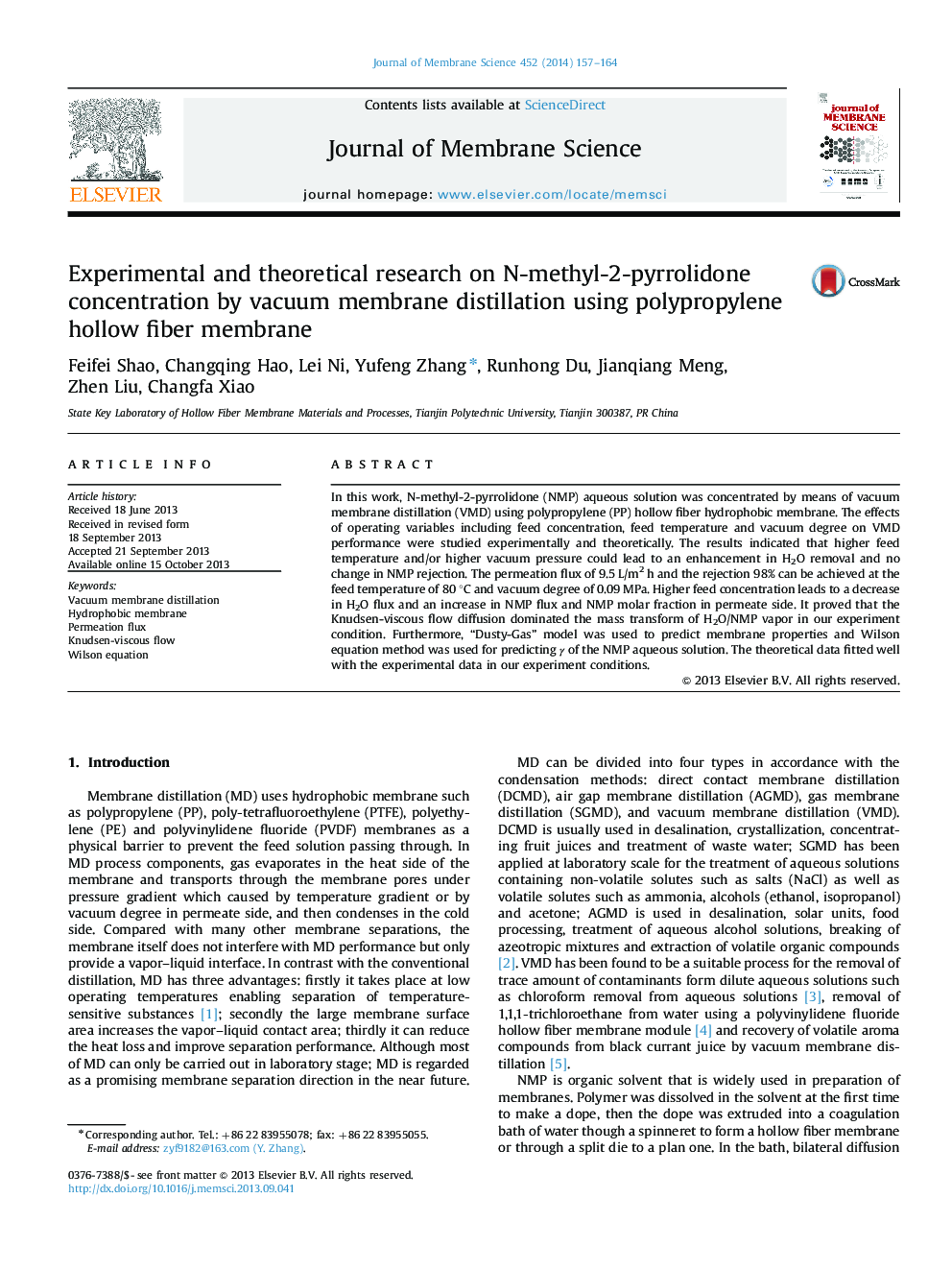| Article ID | Journal | Published Year | Pages | File Type |
|---|---|---|---|---|
| 633702 | Journal of Membrane Science | 2014 | 8 Pages |
•Increasing feed temperature and vacuum degree will increase flux.•Increasing feed concentration will decrease NMP rejection.•Wilson equation method is fit for predicting γ of the NMP aqueous solution•Knudsen-viscous flow diffusion dominate the mass transform of NMP/H2O vapor.•“Dusty-Gas” model is fit for predicting experimental result.
In this work, N-methyl-2-pyrrolidone (NMP) aqueous solution was concentrated by means of vacuum membrane distillation (VMD) using polypropylene (PP) hollow fiber hydrophobic membrane. The effects of operating variables including feed concentration, feed temperature and vacuum degree on VMD performance were studied experimentally and theoretically. The results indicated that higher feed temperature and/or higher vacuum pressure could lead to an enhancement in H2O removal and no change in NMP rejection. The permeation flux of 9.5 L/m2 h and the rejection 98% can be achieved at the feed temperature of 80 °C and vacuum degree of 0.09 MPa. Higher feed concentration leads to a decrease in H2O flux and an increase in NMP flux and NMP molar fraction in permeate side. It proved that the Knudsen-viscous flow diffusion dominated the mass transform of H2O/NMP vapor in our experiment condition. Furthermore, “Dusty-Gas” model was used to predict membrane properties and Wilson equation method was used for predicting γ of the NMP aqueous solution. The theoretical data fitted well with the experimental data in our experiment conditions.
